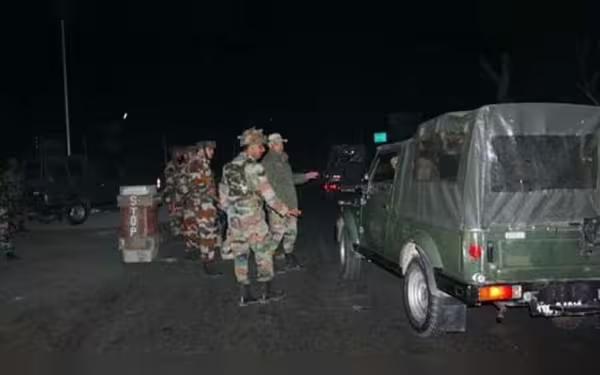Saturday, November 16, 2024 05:33 PM
India Initiates Night Operations in Ladakh
- India conducts night operations in Ladakh with Dhruv helicopters.
- Strategic response to rising tensions with China.
- Enhanced tactical capabilities for Indian military.
 Image Credits: radio.gov.pk
Image Credits: radio.gov.pkIndia has launched night operations in Ladakh, enhancing military capabilities amid rising tensions with China.
In a significant development, India has initiated night operations in the high-altitude regions of Ladakh, utilizing Dhruv helicopters. This move comes in the wake of rising tensions with China along the Line of Actual Control (LAC), a disputed border area that has been a focal point of military standoffs between the two nations.
The Dhruv helicopters, known for their versatility and reliability, are being pushed to their limits by Indian pilots and technicians. These operations are not just a show of strength; they are a strategic response to the ongoing challenges posed by the Chinese military presence in the region. The ability to conduct operations at night enhances India's tactical capabilities, allowing for greater flexibility and surprise in military maneuvers.
Night operations are particularly challenging due to reduced visibility and the need for precise coordination among various units. However, the Indian Air Force has been preparing for such scenarios, ensuring that their personnel are well-trained and equipped to handle the complexities of nighttime flying. This preparation is crucial, as it allows India to maintain a robust defense posture in a region that has seen increased military activity.
As tensions continue to simmer, the implications of these operations extend beyond mere military strategy. They reflect India's commitment to safeguarding its territorial integrity and responding decisively to any threats. The situation in Ladakh serves as a reminder of the delicate balance of power in the region and the importance of vigilance in the face of potential conflicts.
India's launch of night operations in Ladakh marks a pivotal moment in its military strategy. It underscores the necessity for preparedness and adaptability in an ever-evolving geopolitical landscape. As the situation develops, it will be essential for both nations to engage in dialogue to prevent further escalation and to seek peaceful resolutions to their differences. The world watches closely, as the actions taken today will shape the future of regional stability.













